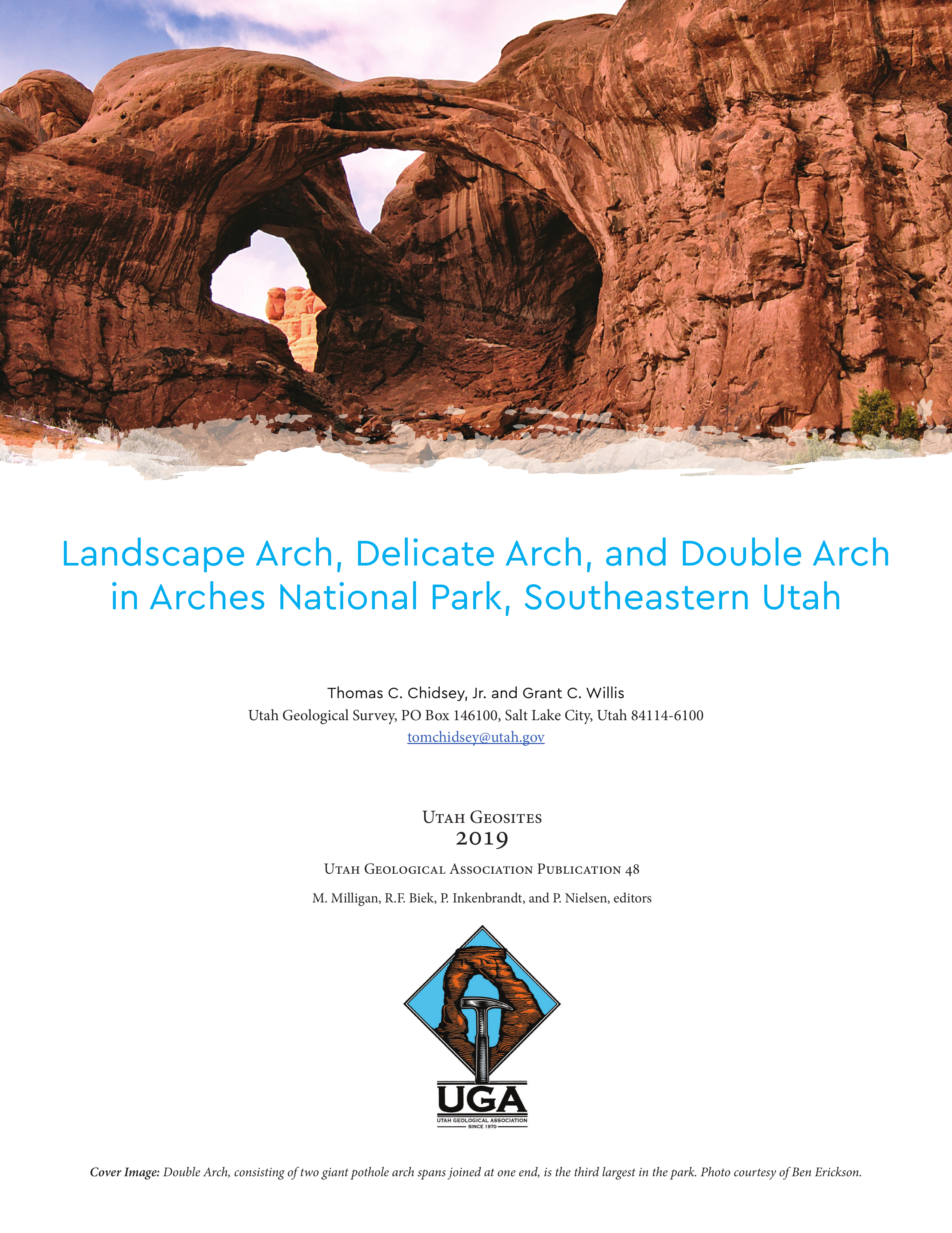Landscape Arch, Delicate Arch, and Double Arch in Arches National Park, Southeastern Utah
Abstract
Arches National Park in southeastern Utah has the greatest concentration of natural rock arches in the world. The park is located in a geologic region called the Paradox fold and fault belt in the northern Paradox Basin and showcases spectacular and classic Colorado Plateau geology with its colorful sedimentary rocks, ancient sand dunes, cliffs, domes, fins, and pinnacles, as well as the arches. The arches in the park and the surrounding region were formed by a unique set of circumstances involving Middle Pennsylvanian (about 308 million years ago [Ma]) to Late Triassic (200 Ma) movement of subsurface salt layers, Middle Pennsylvanian to Late Cretaceous (about 70 Ma) deposition, and Tertiary and Quaternary (23 Ma to the present) folding, faulting, erosion, and salt dissolution. Massive, hard, brittle sandstones jointed by folding, resting on or containing soft layers or partings, and located near fold structures such as salt-cored anticlines undergoing dissolution, and a dry climate, all favor the formation of arches. Rarely do all these phenomena occur in one place, but they do in Arches National Park.
The Natural Arch and Bridge Society (NABS) stated, “A natural arch is a rock exposure that has a hole completely through it formed by the natural, selective removal of rock, leaving a relatively intact frame.” They also make it clear that a natural bridge (which is at least partially formed by flowing water) is one type of natural arch (NABS website) (see A Bit of Perspective, below, for more explanation). Using their own criteria, Stevens and McCarrick (1988) catalogued over 2000 natural arches in Arches National Park; most have unique characteristics that could qualify them as geosites. However, the three most famous arches in the park, and perhaps the world, are Landscape Arch, Delicate Arch, and Double Arch, and thus these were selected as the geosites for this paper.

Copyright (c) 2019 Utah Geological Association

This work is licensed under a Creative Commons Attribution 4.0 International License.

